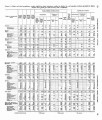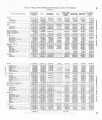| OCR Text |
Show COMMISSIONER OF INDIAN A ~ A I R S . 29 any other! department for the purpose of disposing of surplus Gov-ernment ropert The e&rt to $liver supplies to the schools and agencies at a cer-tain time was in some instances made secondarX .to buying whei~ the market was ri ht. Field officers realizing t is economi: galn have cooperated spyendidly. Little trouble was experienced m get-ting cars, and shipments once started r9ched their destinations in a reasonable time. The warehouses, particularly in Chicago, had dlffi-culty in obtaining proper help, hut toward the end of the year this condition was somewhat improved. FORESTRY. About July 1, 1920, the abnormal demand for timber products that had existed for many months began to weaken, and within three months from that date the sale of manufactured products. be-came very difficult. During the remainder of the calendar year 1920 there was no marked decline of prices, but the sale and shipment of products steadily declined. Early in the year 1921 manufacturers began to offer the lower grades of stock at greatly reduced prices, and during the first six months of the year the market became con-tinuously weaker. The suspension of shipments during the last months of 1920 and the subsequent reduction of prices below the actual cost of produc-tion of a large portion of the lumber then in the hands of manu-facturers resulted in the clmmg of many mills manufacturing !ogs cut on Indian reservations and a resultant abandonment of loggmg, or a great curtailment of operations, on nearly all contract areas. Large sales of yellow pine at very satisfactory prices mere made on the Jicarilla and Klamath Reservations, and a sale of white and lvormay pine, cedar, and other products on allotments of the Nett Lake Reservation proved exceptionally advantageous to the Indians. However, the demand for stumpage has been very light during the greater part of the year and comparatively few offerings of timber have been made. The im rovement of telephonic communication on reservations, begun earfy in 192.0, has been continued through the year, as has also the systematic valuation survey of the Klamath Reservation. It is expected that the Klamath forest survey will be rompleted during the working season of 1922, and the Service will then be in posession of reliable and compl$e data as to forest resources and land classification on this extensive reservation. Special attention has been given to a study of lumber production costs for the purpose ot obtaining complete data for use in stumpage apprais?ls and price readjustments. Very satisfactory pro ress has been achieved in th~s direction. Several mill scale studies % ave been conducted and sub-stantial advancement made in the collection of photographic illus-trations of forestry operations on Indian reservations. The forest-fire situation was particularly acute in Washin@on and Montana during July and August, 1920, and unusually heavy ex-penditures were incurred on the Colville and Flathead Reservations in efforts to control the fires. The damage to timber and grazing mould have been much greater except for the effort and funds thus expended. |









































































